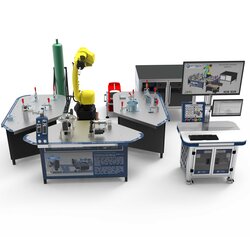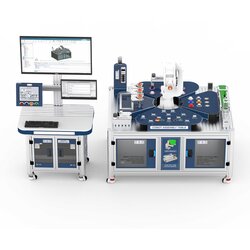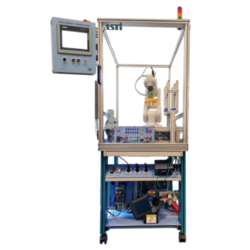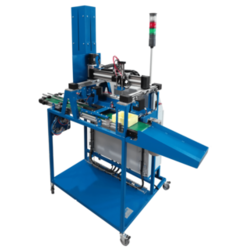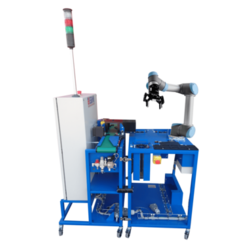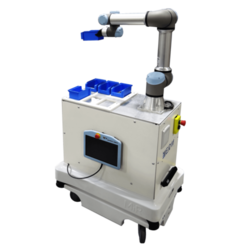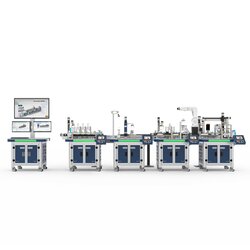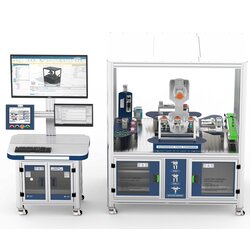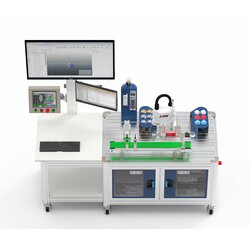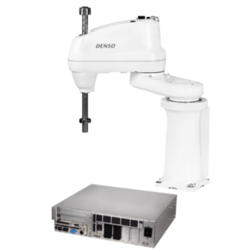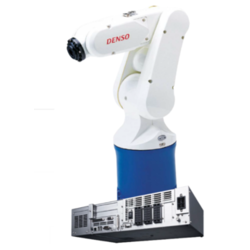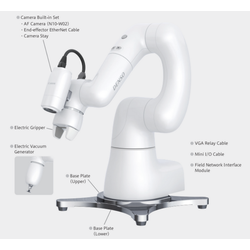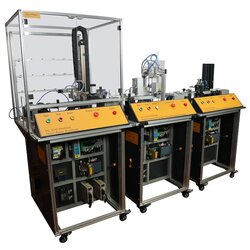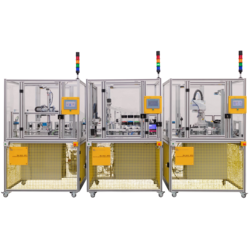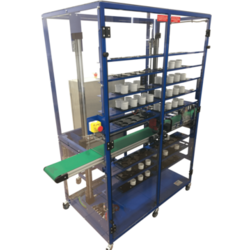Robotics Lab Equipment for Schools
Sort by
Learn more about Robotics Lab Equipment
In this section we will cover robotics lab equipment designed specifically for education and training of industrial skills necessary for future robot technicians, operators, and programmers.
STEM Robotics vs. Industrial Robotics
These days the field of robotics is addressed at various levels of education and with various expected or desired outcomes. At Edquip we broadly categorize “robotics for education” into two different fields: STEM Robotics, and Industrial Robotics. Explanation about how they differ below:
STEM Robotics
The aim of STEM Robotics is to use the field of robotics to teach science, technology, engineering, and mathematics in an interdisciplinary and applied way. STEM robotics programs are also
STEM Robotics programs are run both in formal education as well as informal education (after school programs etc.), mostly at primary and secondary education level.
Instructional technology used for teaching STEM robotics can be described as educational kits comprising a mix of hardware, software, and content.
Industrial Robotics
The aim of Industrial Robotics Education is (not to teach STEM, but) to teach the skills necessary for any future technician to be able to operate, program, maintain and generally manage industrial robotics.
Industrial Robotics is taught in technical high schools, vocational training centers, community colleges, polytechnics, and universities.
Instructional technology for industrial robotics is always built to closely mimic industrial processes and tools which students will encounter in the working life after their education or training.
|
|
Educational Aim |
Educational level |
Instructional technology |
|
STEM Robotics |
Teaching STEM & other life skills |
Primary and secondary (formal & informal) |
Science kits, hardware, software, content |
|
Industrial Robotics |
Vocational skills for effective employment |
Technical high school, vocational training, college, and university |
Industrial grade components, to mimic real processes and tools |
At Edquip you can find instructional technology for teaching Industrial Robotics, if you are rather looking for STEM robotics, we would suggest our friends at STEMfinity.
Why teach Industrial Robotics?
Against the backdrop of rapid technological growth, key areas in our economies such as manufacturing has started a journey of increased automation, which currently has no end in sight. The International Federation of Robotics has released a positioning paper for the Next Generation Skills which delivers a few important conclusions:
- Manufacturers are turning to advanced automation and flexible manufacturing to cost-effectively respond for demand for smaller, customized production runs.
- Automation will not replace employees but is shifting skills requirements to higher-skilled, better-paid jobs.
- Advances in robotics will significantly change manufacturing jobs and skills profiles over the next 10 years.
- Automation and increasing robot adoption is creating new, interesting roles in manufacturing.
- Manufacturers today struggle to hire workers. A shortage of qualified workers at all skills levels is forecast to continue unless action is taken.
It becomes clear that anyone who jumps onto the bandwagon of change and applies a continuous lifelong learning approach can have a great career in manufacturing and industrial robotics.
Future skills for Industrial Robotics
The continuous changes in advanced manufacturing and industry 4.0 will impact various traditional roles in different ways, for example, production operators, technicians, engineers, and production managers will not be impacted similarly, but there are a few trends that will be true for all these positions.
Work will be increasingly multidisciplinary, where employees work with wider ranges of machines, different software systems, many collaborative robots, distinct sensor technologies, pneumatics, vision systems etc.
Consultancy McKinsey predicts that by 2030 manufacturing workers will spend 58% more of their time using technology skills, and 27% less of their time doing physical and manual work, than in 2016. Simultaneously it is also expected that employees will spend almost a third more of their time using social and emotional skills.
Best practice teaching Industrial Robotics
Looking at a two flagship projects across Europe and USA it is clear that developing future skills in Industry 4.0 in order to remain competitive in Manufacturing, is of highest priority.
As a response to supporting Europe in adopting industry 4.0, the European Commission has launched the EIT Manufacturing program, where one out of three key pillars is specifically promoting, developing and funding Manufacturing Education (23 funded projects).
Also, in the USA the Department of Defense stands behind a consortium called the Advanced Robotics for Manufacturing (ARM Institute) which highly stresses the need to develop an Industry 4.0 skilled workforce (69 funded projects).
If we look at already funded education and training projects, by both EIT Manufacturing and the ARM institute, it is clear that they both favor programs with “hands-on” (kinaesthetic) learning components.
I hear and I forget. I see and I remember. I do and I understand.
- Confucius
